Bright outdoor spaces always have a way of sparking joy and creativity in young minds. When nature and play unite, everyday adventures transform into immersive learning experiences that nurture curiosity and confidence. These 22 EYFS Outdoor Area Ideas are designed to turn simple outdoor spaces into vibrant playgrounds and dynamic classrooms. They blend nature’s beauty with purposeful design elements that encourage physical activity, social interaction, and imaginative exploration. Each idea offers practical benefits while igniting the senses and inspiring lifelong discovery. Explore the 22 EYFS Outdoor Area Ideas and discover how nature-based play fosters growth and learning.
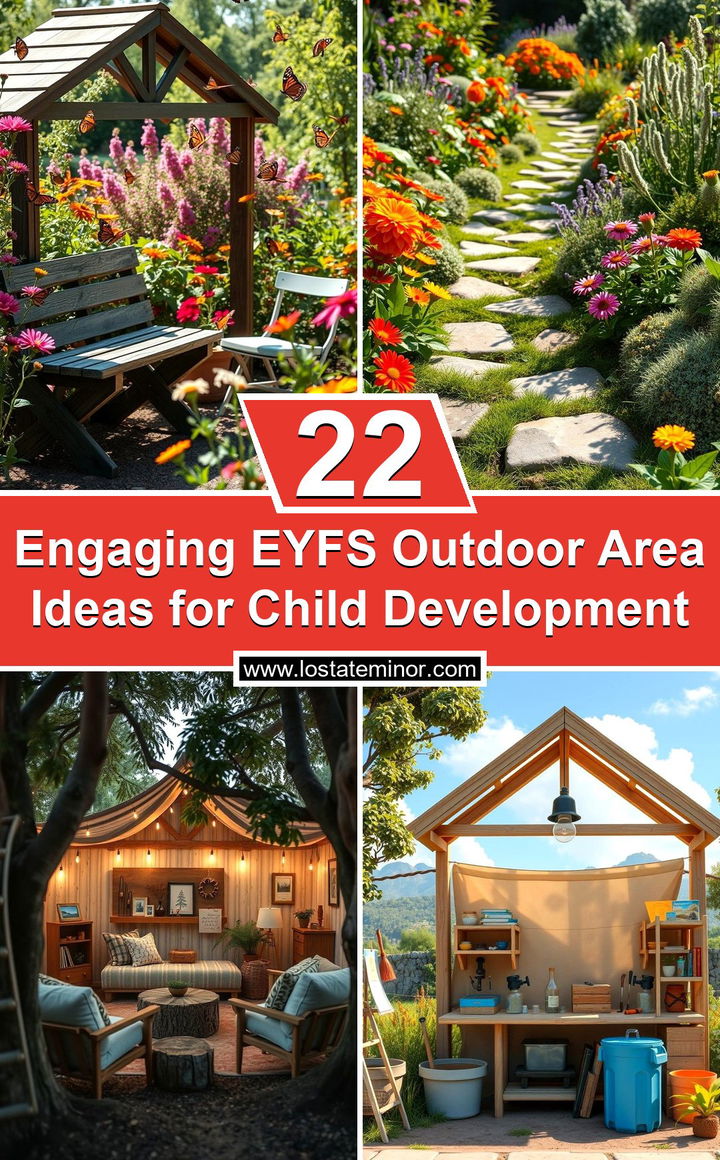
1. Creative Nature Play Zones
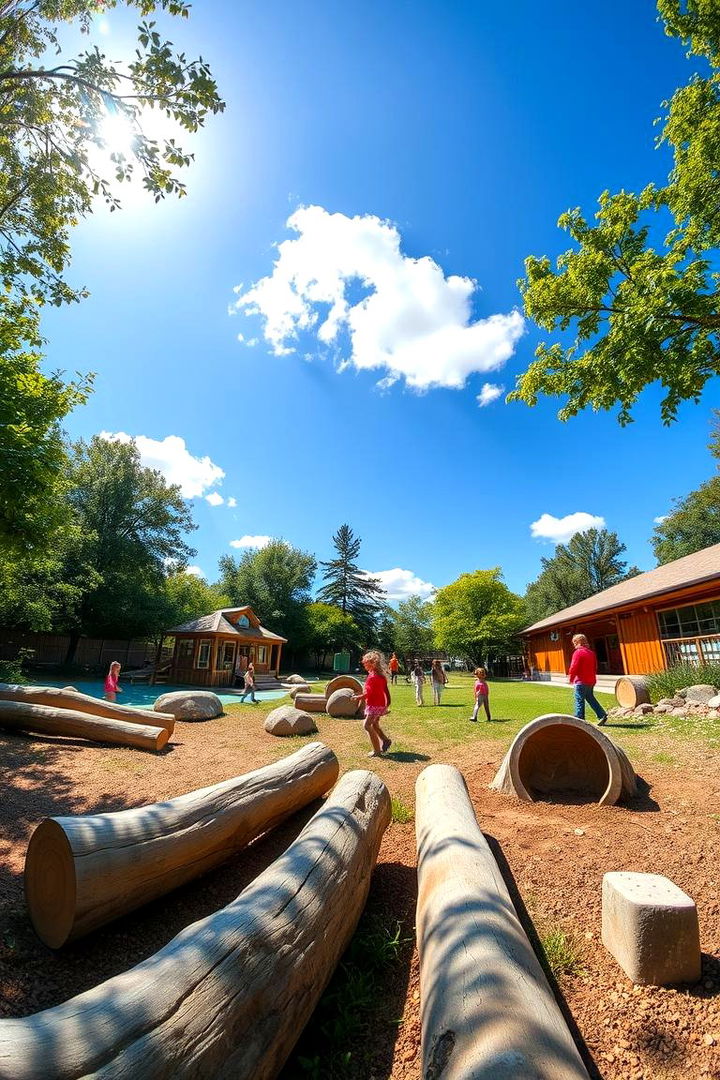
A vibrant outdoor environment can transform a dull space into a magical playground where children explore, imagine, and interact freely. In creative nature play zones, natural elements such as logs, stones, and foliage serve as building blocks for imaginative games and collaborative problem-solving. This playful setup boosts physical development and sensory skills while fostering independence and social interaction. Children learn to experiment with nature and adapt to ever-changing play scenarios, which sparks both creativity and team spirit. The result is an engaging environment that nurtures active learning, curiosity, and holistic development for every young learner.
2. Sensory Garden Explorations
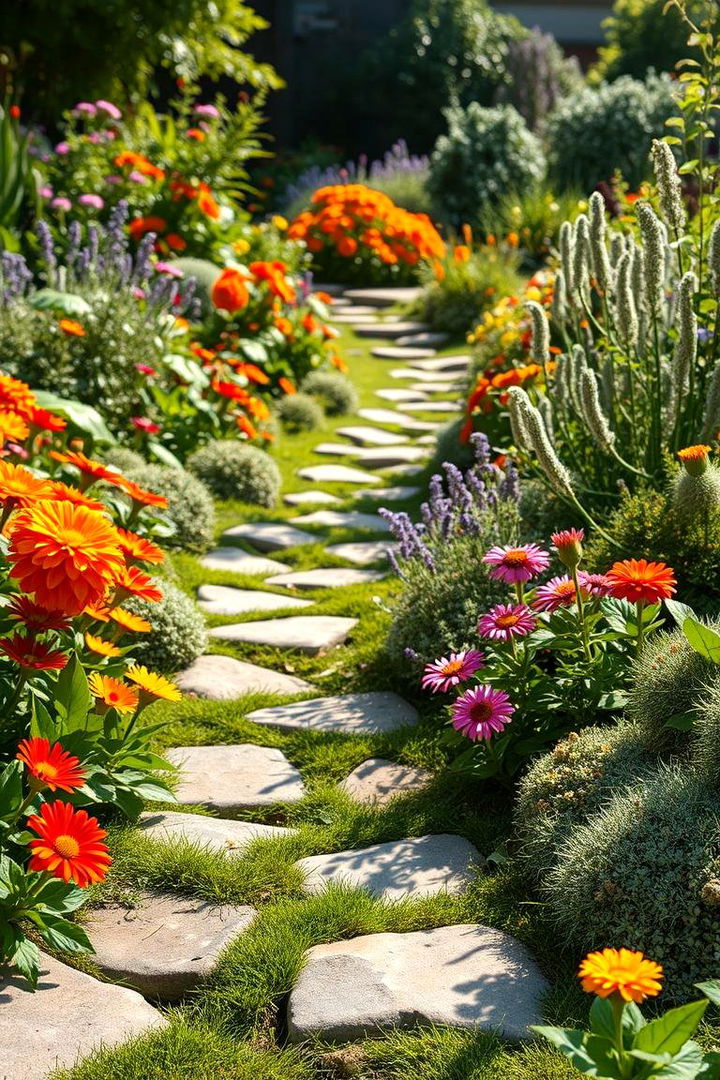
With a burst of natural color and texture, sensory garden explorations engage every child’s senses in the outdoors. These gardens feature a variety of plants, herbs, and textured surfaces that encourage tactile discovery and stimulate curiosity. Children delight in the soft petals, aromatic leaves, and gentle rustling sounds, which support early sensory development and fine motor skills. The immersive experience promotes language development and social interaction as children discuss their discoveries. By intertwining nature with interactive play, sensory gardens become a vibrant space for learning about the natural world while nurturing imaginative thought and self-expression.
3. Interactive Mud Kitchens
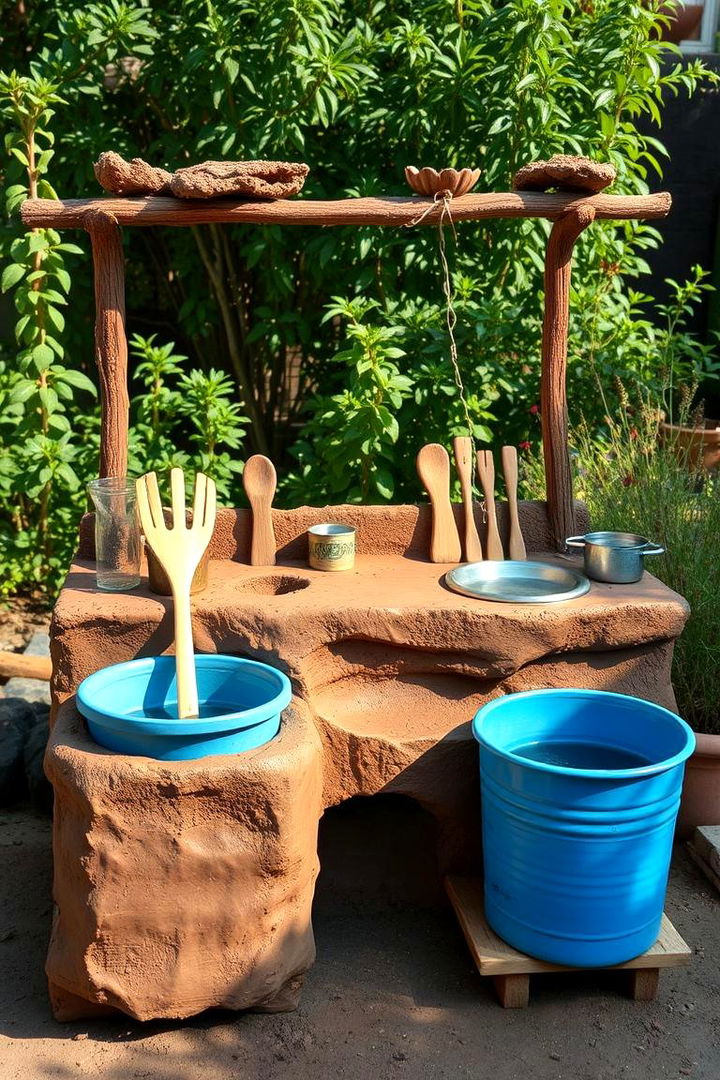
Imagine a fun-filled outdoor area where natural elements like mud and water become the ingredients for creative play. Interactive mud kitchens provide a hands-on learning experience that encourages children to mix, mold, and create using nature’s own materials. This setup sparks tactile curiosity while promoting imaginative role-playing and cooperative problem solving. As youngsters experiment with textures and colors, they develop fine motor skills and learn the basics of scientific inquiry in a playful context. The experience builds self-confidence and collaboration while offering a refreshing, mess-filled avenue for creative expression and sensory integration.
4. Art in the Outdoors
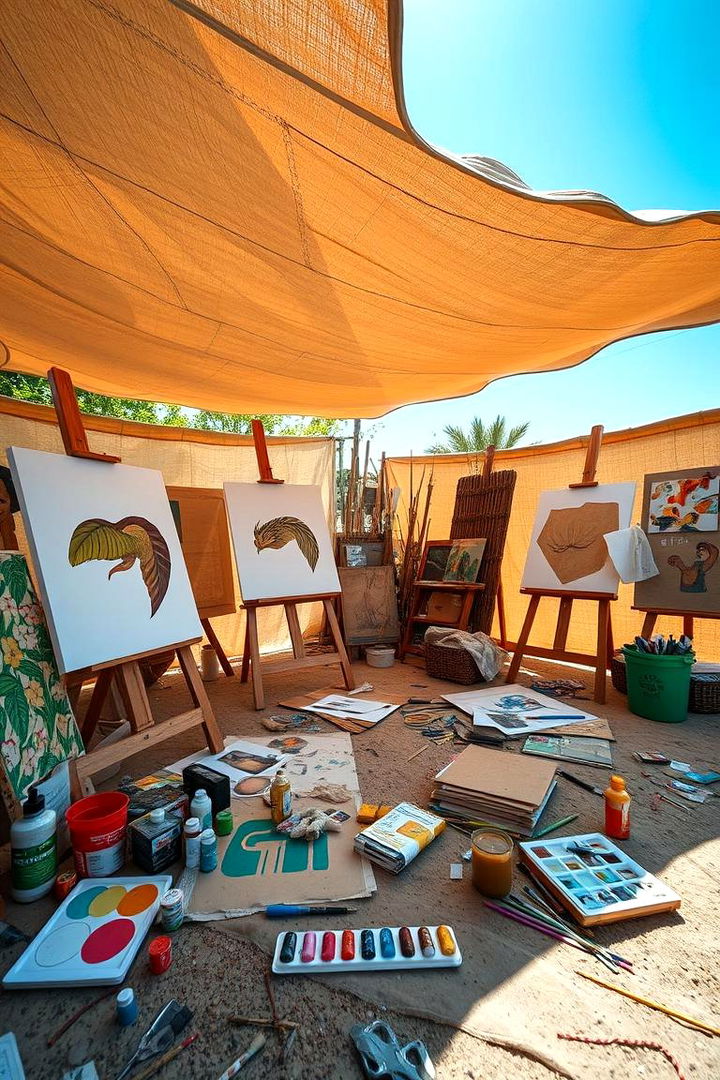
Another inspiring concept is the transformation of outdoor spaces into art studios. Art in the outdoors invites children to use natural materials and eco-friendly supplies to create their own masterpieces under open skies. The natural light and fresh air enhance creativity, while the tactile quality of organic materials nurtures fine motor development and imaginative expression. This dynamic setup also encourages group collaborations and self-driven projects, making it a perfect blend of creative freedom and structured learning. In such environments, every brushstroke and sculpted form celebrates the merging of art and nature, sparking both innovation and joy.
5. Mini Obstacle Courses
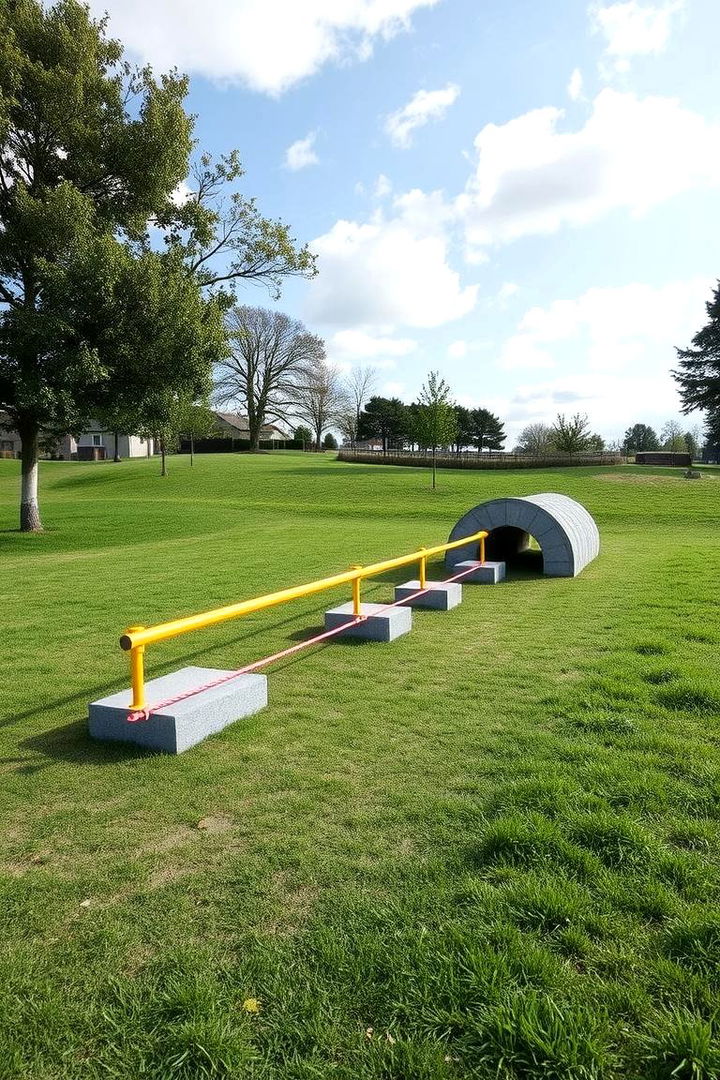
Consider an outdoor space reinvented as a mini obstacle course designed to boost both physical and cognitive development. These courses feature a mix of balance beams, stepping stones, and tunnels that challenge young learners to navigate obstacles while enjoying playful competition. The active environment strengthens gross motor skills and encourages risk-taking in safe conditions. Through this experiential learning, children build resilience, cooperative skills, and self-confidence as they overcome challenges. The playful yet structured design makes every moment on the course a lesson in agility, perseverance, and creative problem-solving, turning physical play into an enriching outdoor adventure.
6. Water Play Wonderland
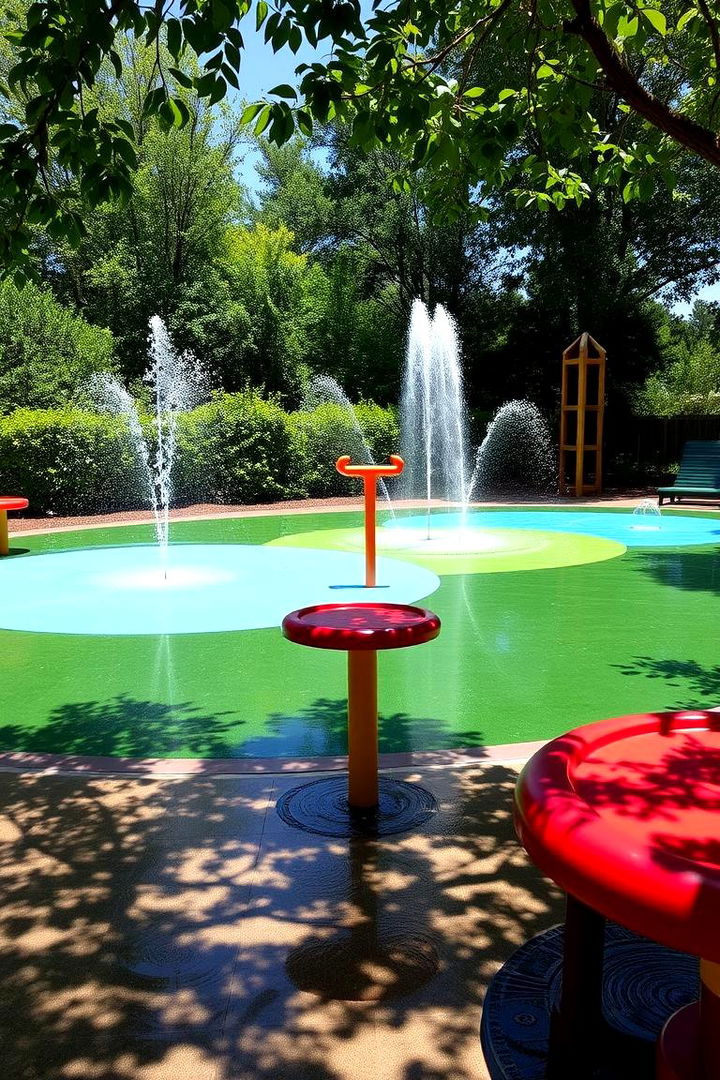
Under the warm glow of sunlight, a water play wonderland creates an inviting scene of splashes and laughter. This outdoor setup includes features like sprinklers, splash pads, and water tables that provide cooling fun and sensory stimulation on hot days. The rhythmic sound of water enhances the playful atmosphere and encourages group activities that build social and motor skills. As children interact with moving water, they also develop an understanding of cause and effect, while enjoying the natural, refreshing element. Water play spaces combine safety with endless fun, making them perfect for experiments in tactile and imaginative exploration.
7. Imaginative Role Play Spaces
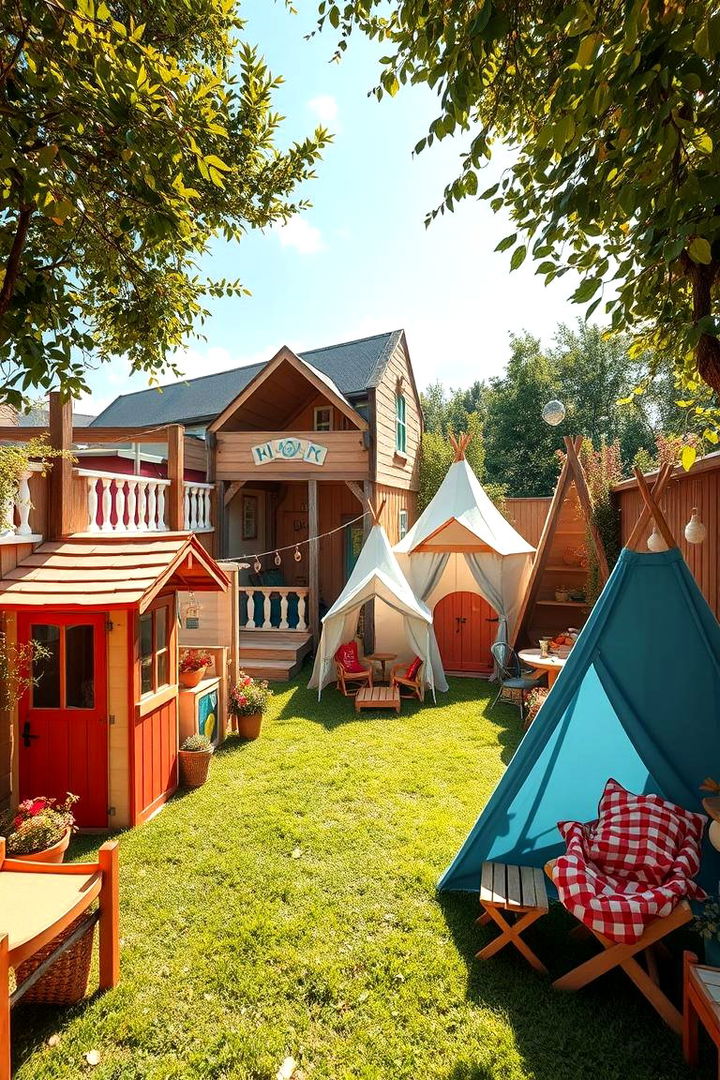
What if outdoor areas were designed specifically to inspire imaginative role play? Imaginative role play spaces incorporate playhouses, tents, and themed corners that spark storytelling and dramatic adventures. These dedicated environments allow children to adopt different characters, practice social roles, and engage in interactive narratives that build language skills and empathy. With each imaginative scenario, little ones learn about cooperation, responsibility, and creativity. This setup creates a safe haven for exploration where every game becomes a learning opportunity, fostering both cognitive and social development while nurturing a love for creative, outdoor play.
8. Dedicated Storytelling Nooks
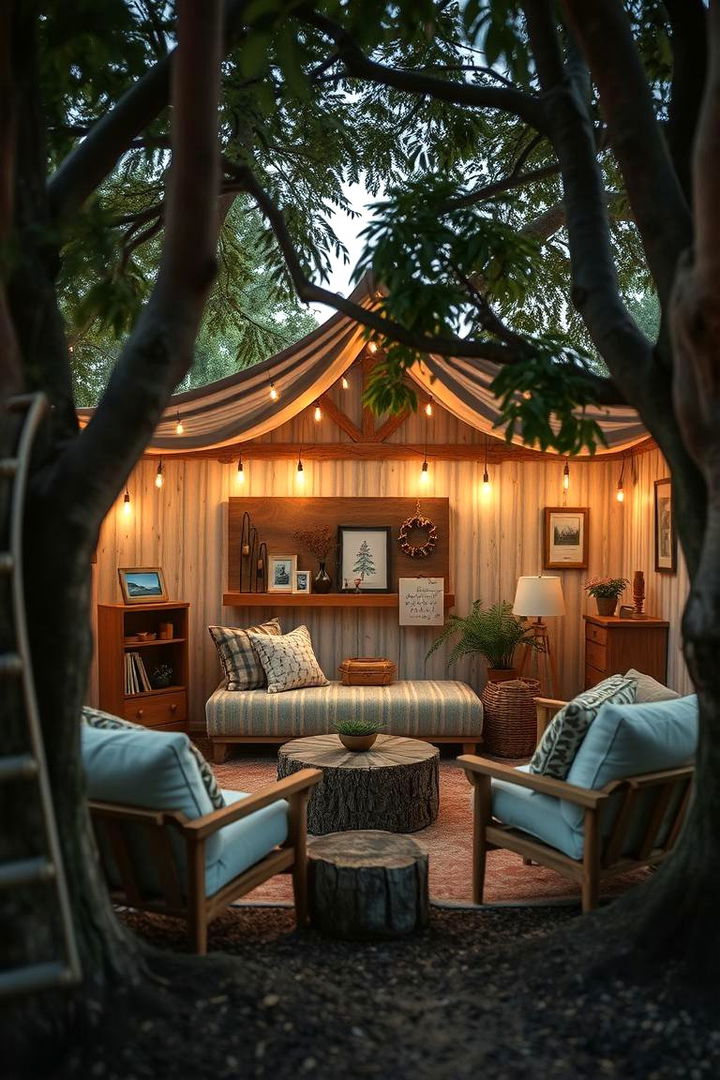
For those quiet moments in the great outdoors, dedicated storytelling nooks offer a calm escape into the world of imagination. Designed with soft seating, gentle lighting, and natural elements like trees and plants, these areas provide an inviting space for sharing stories. Here, children can listen, discuss, and even create their own tales, which boosts language development, memory, and concentration. The peaceful ambiance encourages introspection and personal expression, balancing energetic play with quiet reflection. This nurturing environment turns outdoor reading and narration into a cherished ritual that strengthens emotional and cognitive growth.
9. Outdoor Musical Instruments
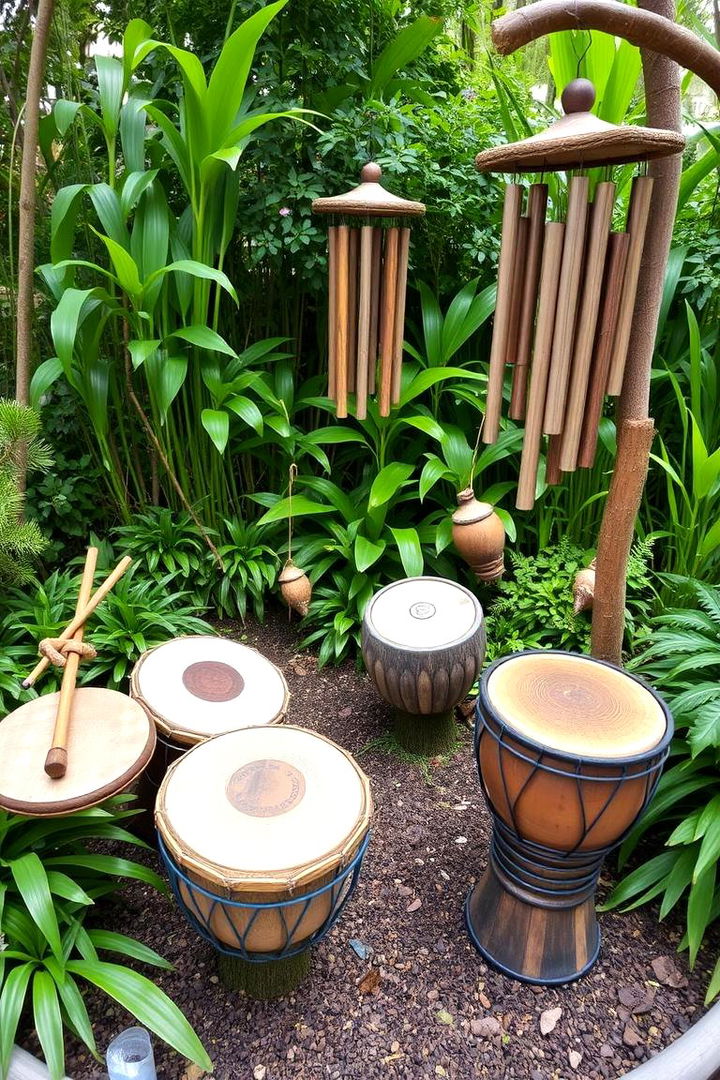
By integrating outdoor musical instruments into play areas, you open a doorway to auditory creativity. These outdoor setups feature natural instruments such as drums, chimes, and even improvised materials like logs to produce rhythm and melody. The resulting musical experience enhances auditory discrimination, teamwork, and creative expression. Children enjoy experimenting with sounds and collaborating to create impromptu symphonies that boost confidence and social skills. The fusion of music with nature paints a lively picture, where every note and beat helps build a foundation for communication and cultural appreciation through play and cooperative learning.
10. Gardening for Kids
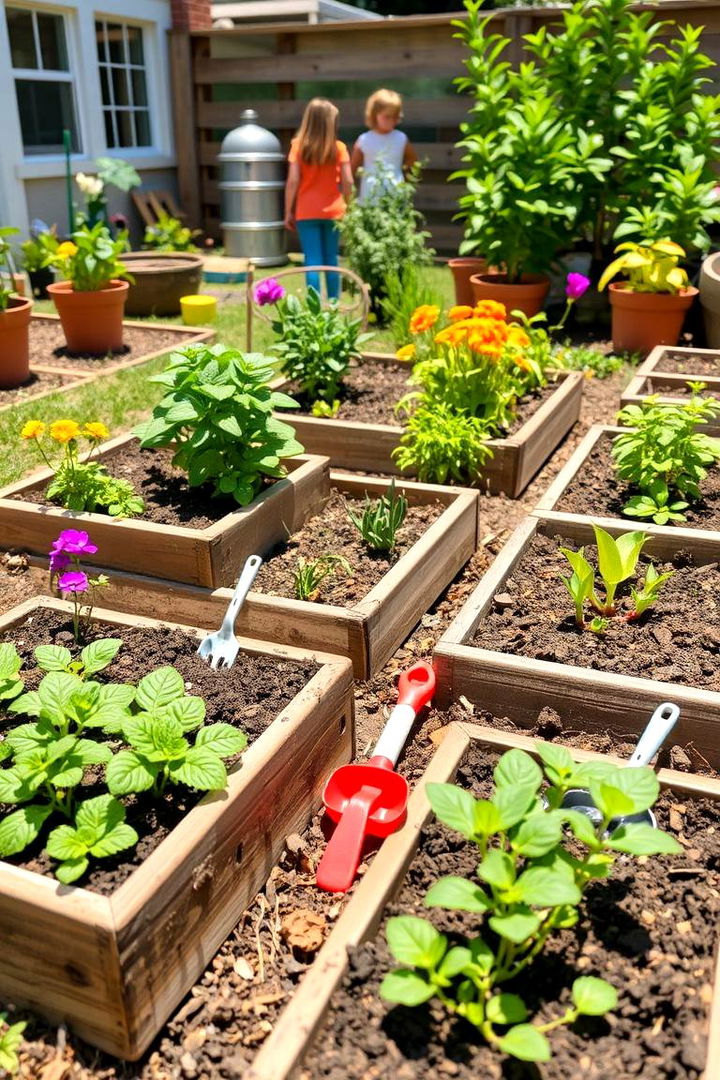
Unlike conventional classrooms, an outdoor gardening space offers a hands-on approach to learning about the environment. Gardening for kids involves planting, watering, and nurturing flowers, vegetables, and herbs in a dedicated plot. The tactile experience teaches responsibility, patience, and the basics of plant biology, while also enhancing motor skills and offering sensory enrichment. Children experience the joy of watching their efforts bloom into living plants, which reinforces the value of hard work and environmental care. This engaging, earthy activity instills a sense of pride and curiosity, making nature an integral part of everyday learning.
11. Shaded Rest and Reflection Areas
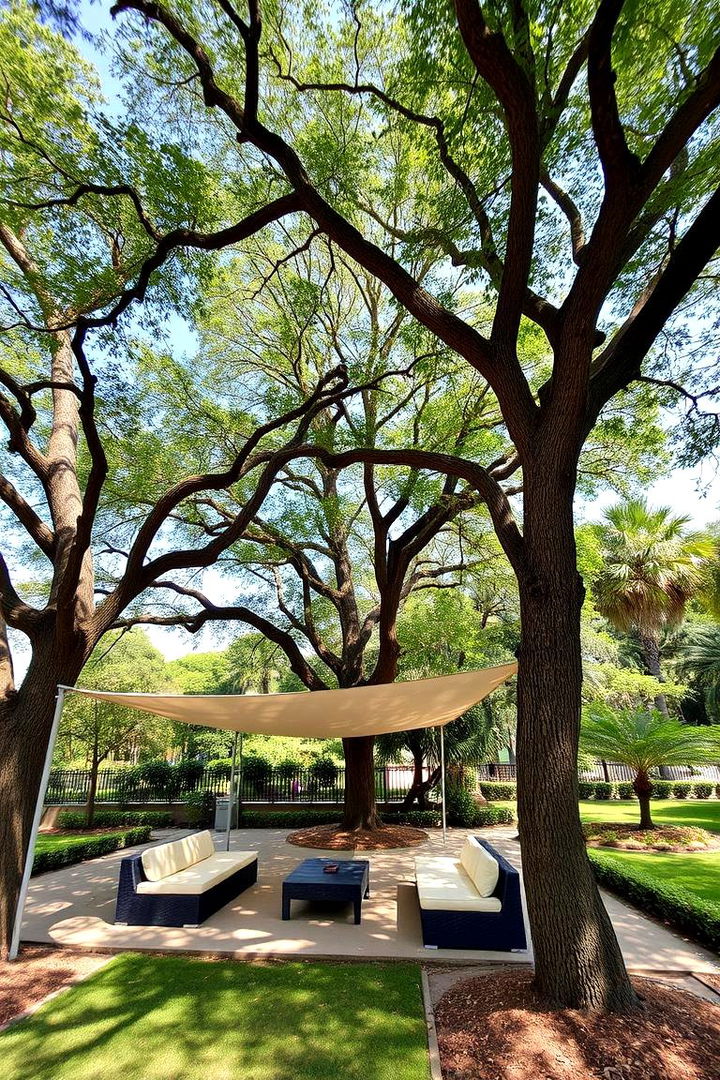
With natural shades provided by trees, canopies, or pergolas, shaded rest and reflection areas create serene outdoor retreats for children. These cozy havens offer a peaceful setting where young learners can relax, read, or simply observe nature. The calming influence of gentle light and cool air helps balance energetic play with thoughtful reflection, promoting mindfulness and emotional well-being. Such restful spaces are essential for recharging during busy days, fostering an environment where quiet moments nurture concentration and creativity. The harmonious blend of activity and repose ensures that every outdoor experience is both exciting and rejuvenating.
12. Eco-Friendly Exploration Corners
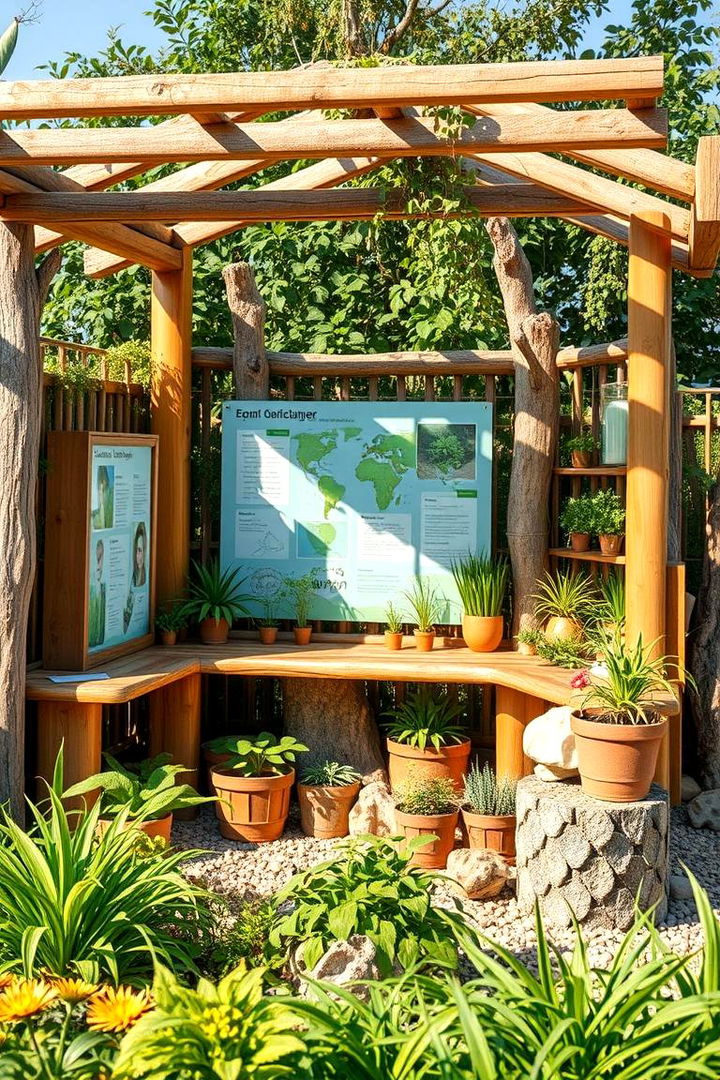
Taking advantage of recycled materials and indigenous plants, eco-friendly exploration corners inspire curiosity about sustainability and nature. These thoughtfully designed spaces feature repurposed objects and interactive displays that invite children to explore environmental concepts firsthand. The hands-on activities emphasize the importance of conservation and responsible resource use, fostering ethical and ecological awareness early on. Toddlers engage directly with their surroundings, learning about nature through play and practical experiments. This calm yet stimulating area transforms ordinary outdoor space into an inspiring lesson in creativity, responsibility, and respect for our natural world.
13. Natural Sandbox Adventures
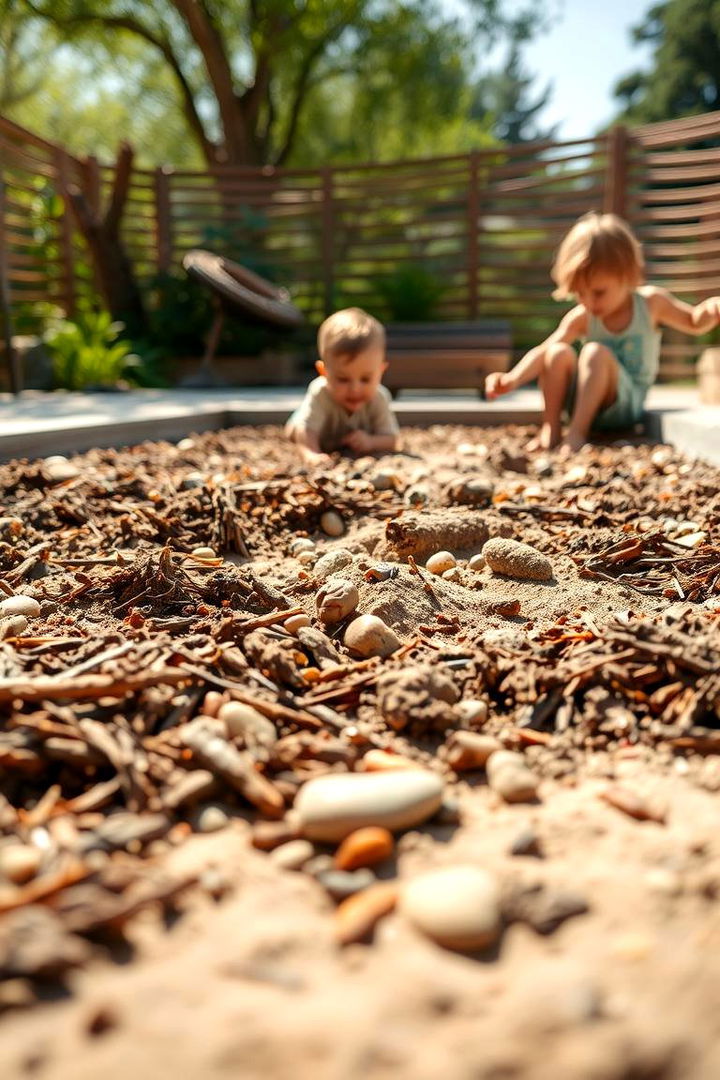
Imagine a sandbox that goes beyond typical play: a natural sandbox adventure enriched with organic materials like mulch, pebbles, and natural debris. This creative setup allows children to dig, build, and explore textures in a safe, engaging environment. The tactile experience fosters fine motor skills and nurtures imaginative construction as kids mold landscapes and structures from earth and nature. Social interaction is encouraged as children collaborate on projects, honing communication and problem-solving abilities. This innovative approach to open-air play combines sensory exploration with creative expression, providing endless opportunities for learning and joyful discovery.
14. Colorful Yarn Art Installations

Another inventive outdoor space celebrates creativity with colorful yarn art installations that dress the environment in vibrant hues. Strung across trees or mobile structures, these installations invite children to interact with cascading threads and loops. The tactile experience sparks artistic expression and fine motor coordination, while the bright colors stimulate visual interest. As youngsters engage with the installation, they learn about patterns, symmetry, and community collaboration. This artistic twist on outdoor design transforms a simple garden into a dynamic art gallery, promoting self-expression and inspired play in an atmosphere where art and nature coexist harmoniously.
15. Butterfly Watching Stations
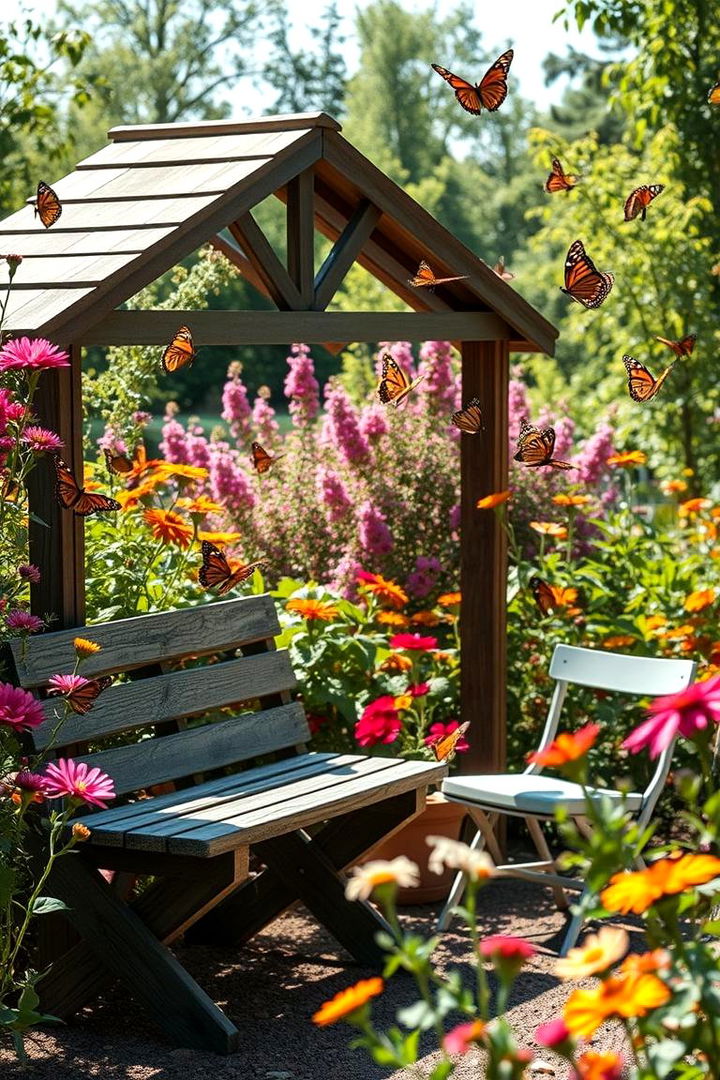
By creating designated butterfly watching stations, outdoor spaces become living classrooms for observing nature’s delicate wonders. Thoughtfully arranged with nectar-rich blooms and comfortable seating, these stations draw butterflies and other small creatures into view. Young explorers are encouraged to observe, record, and learn about metamorphosis and ecosystems in a peaceful setting. This focused activity nurtures patience, respect for wildlife, and scientific inquiry while enhancing visual observation skills. The station becomes a window into nature’s beauty, deepening children’s understanding of life cycles and environmental interconnections in a nurturing, outdoor setting.
16. Mini Sports Fields
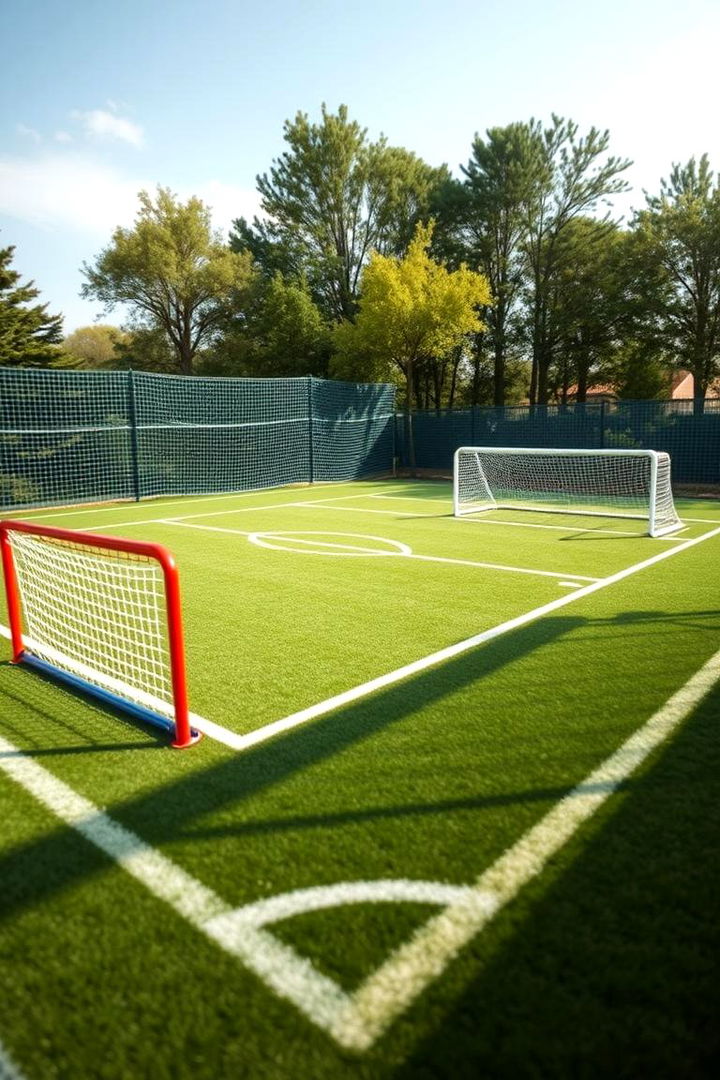
Consider a compact, safe mini sports field designed specifically for young children. With soft grassy surfaces and clearly marked areas for mini football, relay races, and tag games, these fields promote physical activity and cooperative play. The open space nurtures motor skill development, coordination, and social interaction through friendly competition. Children learn the values of teamwork and fair play in an environment that’s both energetic and safe. This dynamic field not only stimulates physical fitness but also fosters self-esteem and resilience as kids celebrate small victories and build enduring friendships through active, outdoor fun.
17. Tactile Trail Adventures
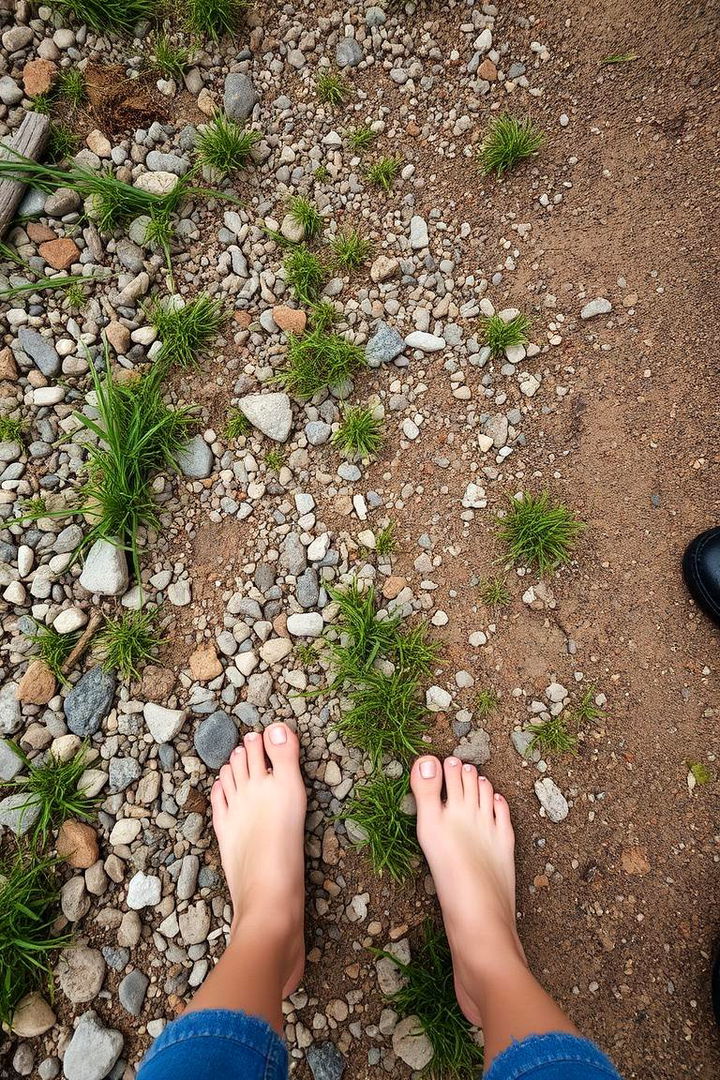
Under the expansive sky, tactile trail adventures invite children to experience nature through varied textures and terrains. This carefully designed path features grass, pebbles, bark, and soft soil, allowing barefoot exploration that sharpens sensory awareness. Each step on the trail introduces young learners to nature’s rich diversity, promoting balance and motor control. As children navigate gentle obstacles and discover hidden natural treasures, they enhance their observational skills and develop a deeper appreciation for outdoor play. The trail becomes a living classroom where movement and sensory experiences intertwine to foster resilience, creativity, and active learning.
18. Outdoor Science Stations
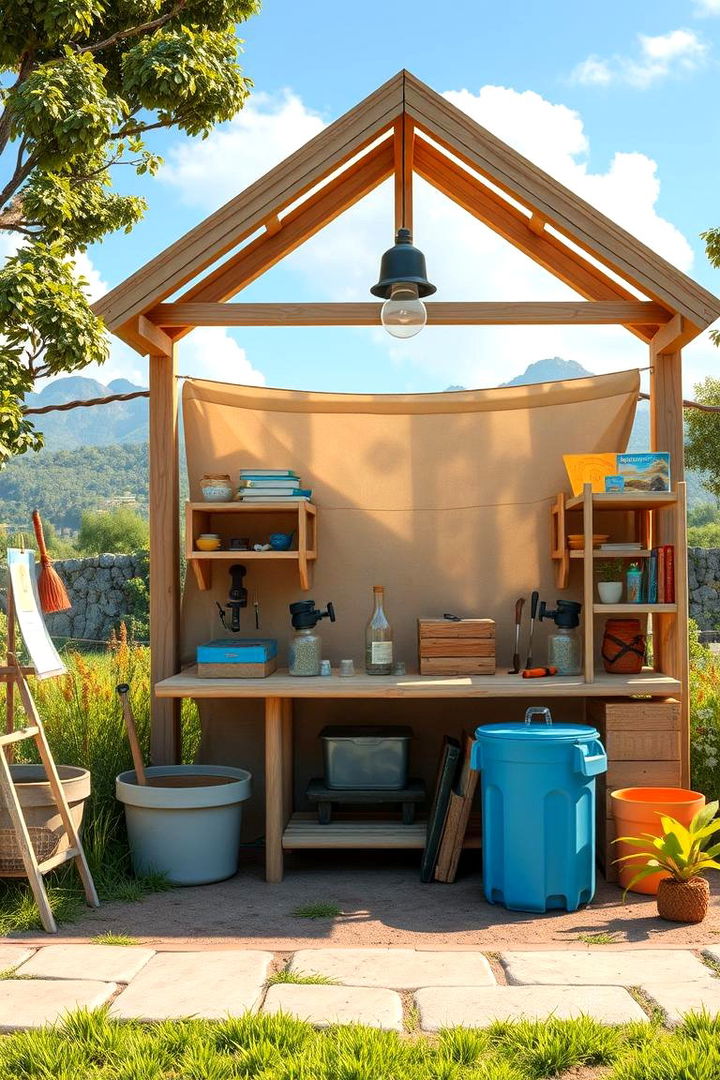
As research has shown, hands-on experiments resonate deeply with young minds, and outdoor science stations offer the perfect backdrop for inquiry-based learning. Equipped with basic scientific tools and interactive exhibits, these stations allow children to observe natural phenomena, measure weather changes, and conduct simple experiments. The interactive setting bridges classroom theory with real-world experience, making scientific concepts tangible and exciting. This innovative area encourages self-led discovery, critical thinking, and collaborative learning, ensuring that curiosity blossoms into a lifelong passion for understanding the natural world—all set against a vibrant, open-air environment.
19. Adventure Climbing Structures
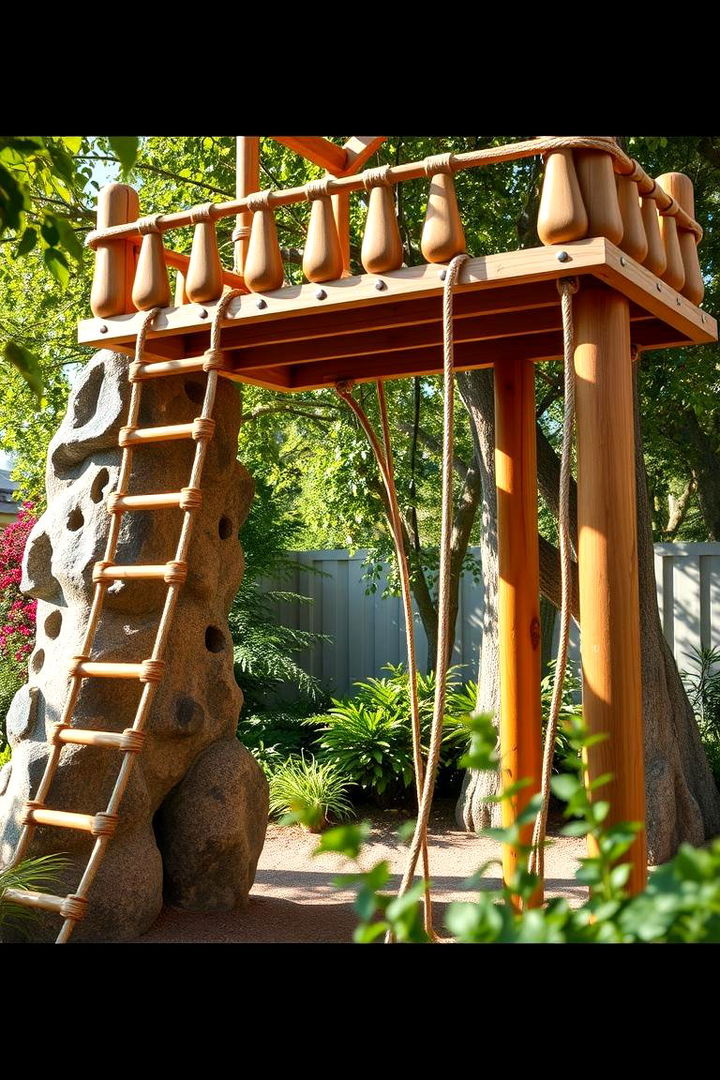
Looking at innovative play ideas, adventure climbing structures provide an exciting challenge while ensuring safety. These installations feature mini ladders, gentle rock walls, and rope bridges that let children test their climbing abilities and build strength. The active pursuit of overcoming physical challenges promotes endurance, balance, and boosted self-esteem. As children navigate various obstacles, they learn to coordinate movements and solve problems creatively. The well-designed structure inspires risk-taking in a controlled environment, turning play into an empowering experience that builds physical fitness, confidence, and resilience among young adventurers.
20. Weather Explorers Zone
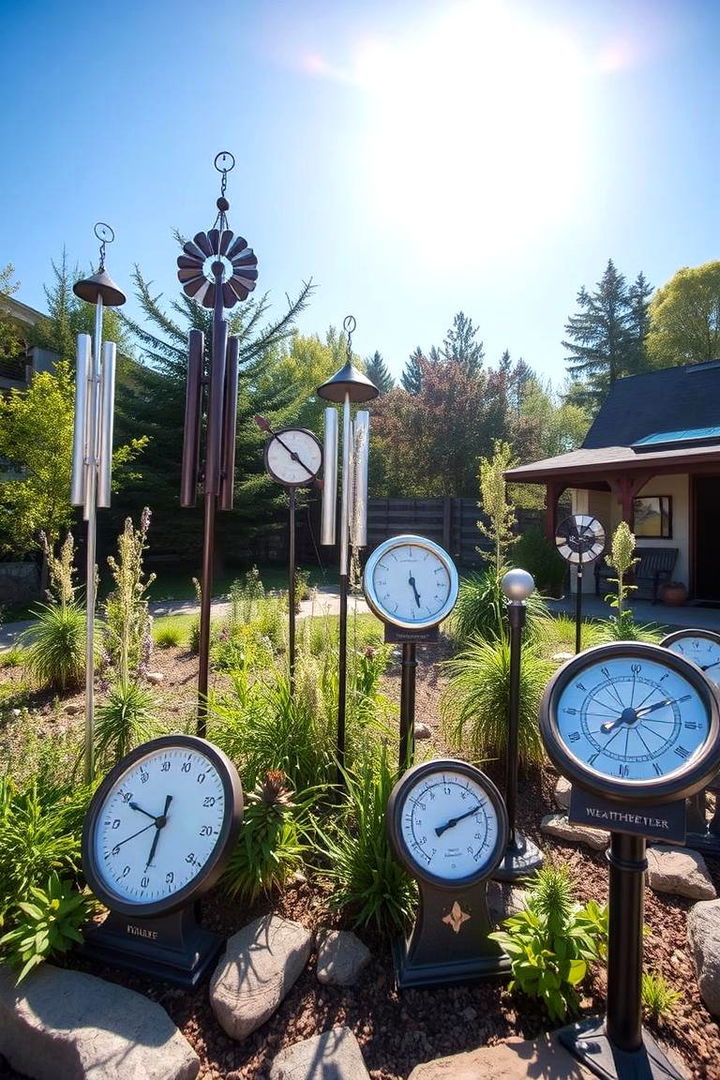
Taking a creative twist, outdoor areas can include a weather explorers zone that introduces children to natural meteorological phenomena. This dedicated zone features simple instruments like wind chimes, thermometers, and sundials, inviting exploration of wind, sunlight, and temperature. As young learners observe and record weather patterns, they cultivate scientific curiosity and critical observation skills. The interactive design transforms everyday weather into an engaging lesson in natural science, allowing children to connect with the environment and appreciate its dynamic shifts. This playful approach makes learning about the weather both fascinating and hands-on, inspiring a passion for discovery.
21. Edible Garden Patches
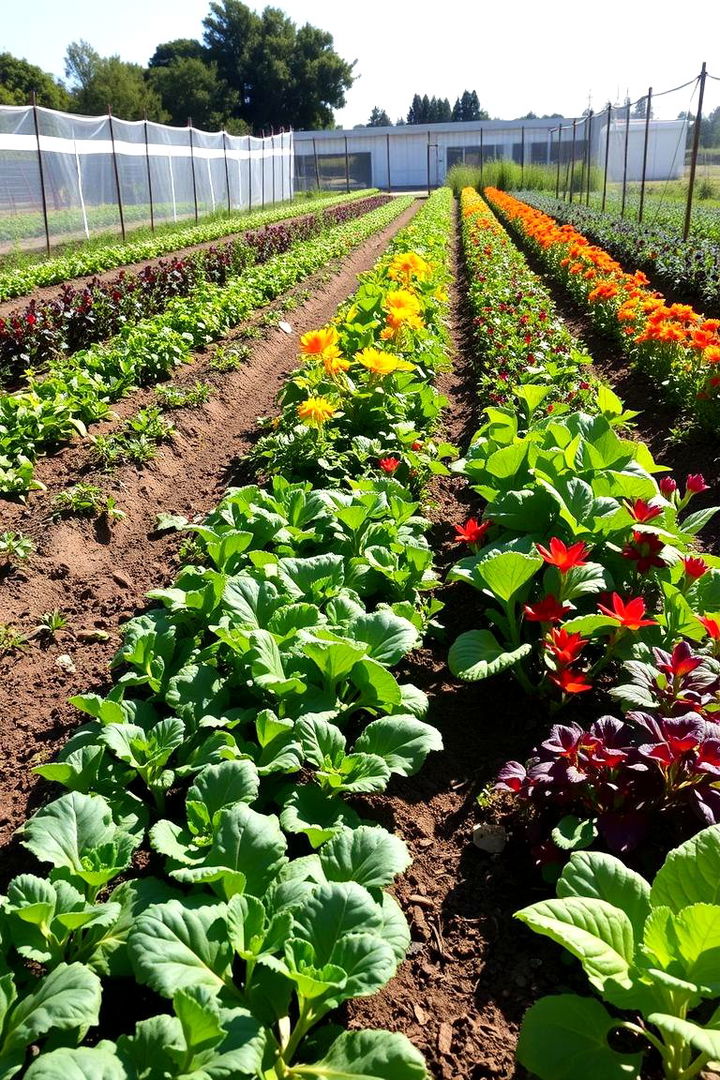
By integrating edible garden patches into outdoor areas, children gain a direct connection with nature’s bounty. These patches offer a hands-on experience where young learners plant, nurture, and harvest fruits and vegetables. Working with soil and seedlings teaches responsibility, patience, and basic biology while instilling an appreciation for healthy, sustainable food. As children witness the growth cycle from seed to produce, they develop fine motor skills and a sense of accomplishment. This engaging, practical approach transforms outdoor play into a nurturing educational journey that celebrates the joys of cultivation and real-world science.
22. Wildlife Observation Hideouts
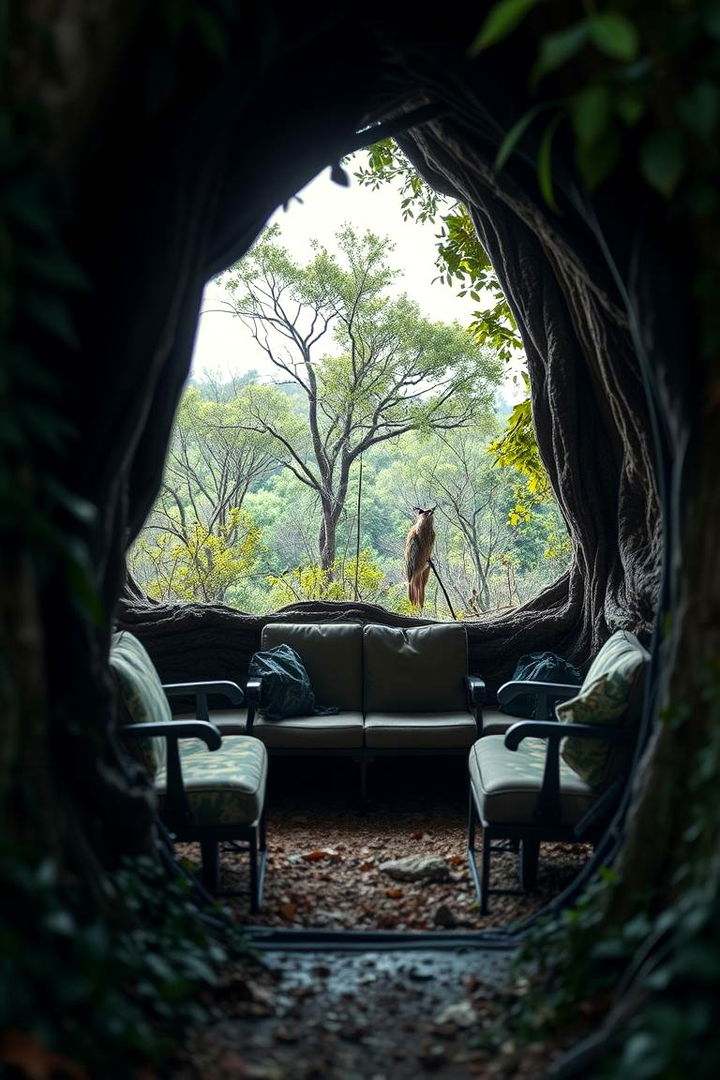
Finally, creating wildlife observation hideouts transforms outdoor spaces into secret havens for budding naturalists. These cleverly camouflaged nooks, complete with hidden seating and observation windows, encourage children to quietly monitor birds, insects, and small mammals. The experience teaches respect for wildlife and nurtures scientific curiosity in a calm, immersive setting. Through patient observation and gentle exploration, kids develop environmental awareness and empathy, embracing nature’s subtle beauty. This welcoming hideout not only fosters learning and discovery but also instills a lifelong passion for the natural world, making every outdoor visit an exciting exploration.
Conclusion:
In summary, these diverse EYFS outdoor area ideas transform ordinary spaces into hubs of creativity, exploration, and learning. Each concept—from sensory gardens and adventure climbing structures to wildlife observation hideouts—offers practical benefits that enhance physical, cognitive, and social skills. By blending nature with purposeful design, these ideas inspire confidence, curiosity, and joyful play in early learners. Embracing outdoor play provides fresh air, endless discovery, and a dynamic classroom where education and fun come together seamlessly.
